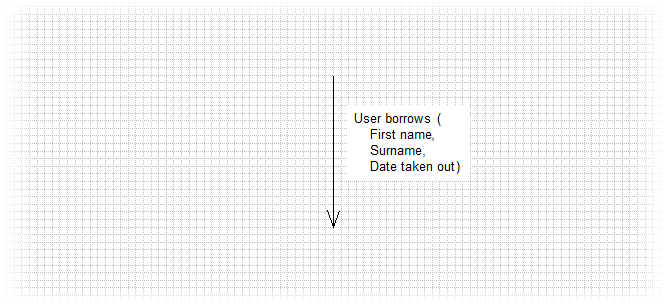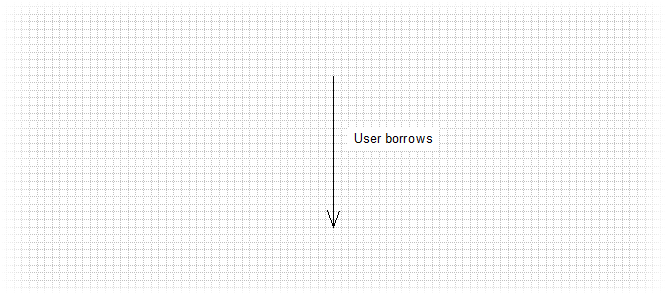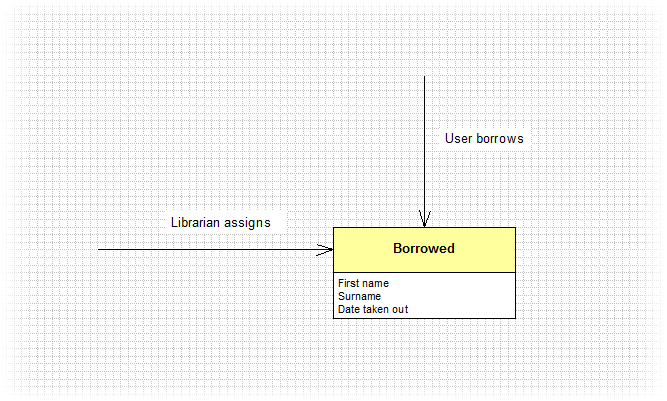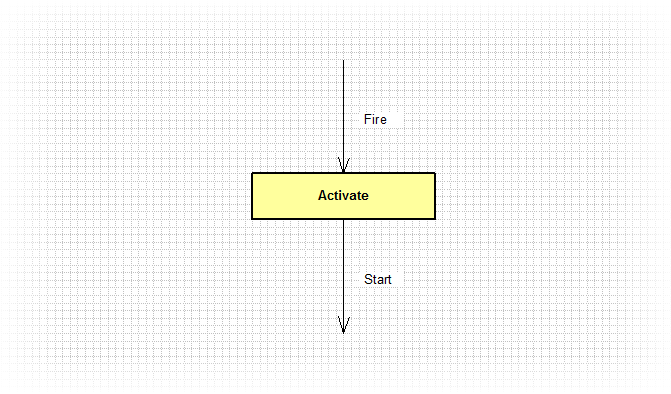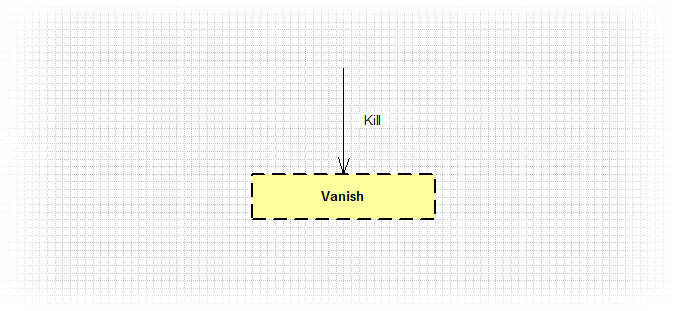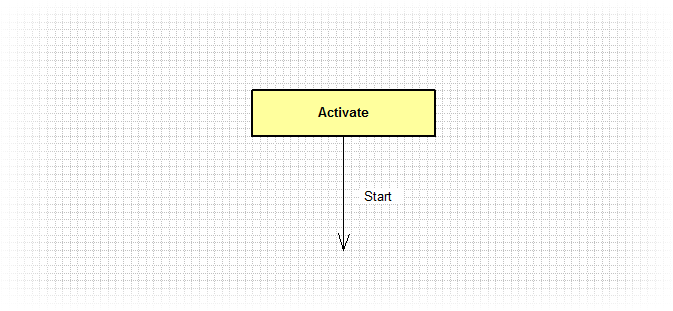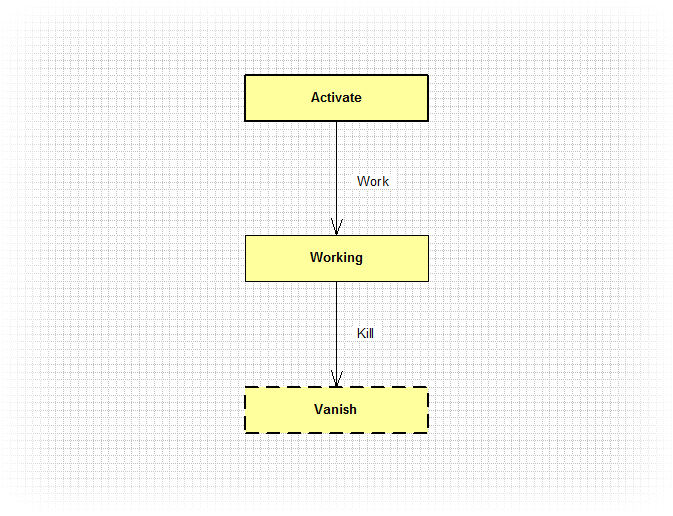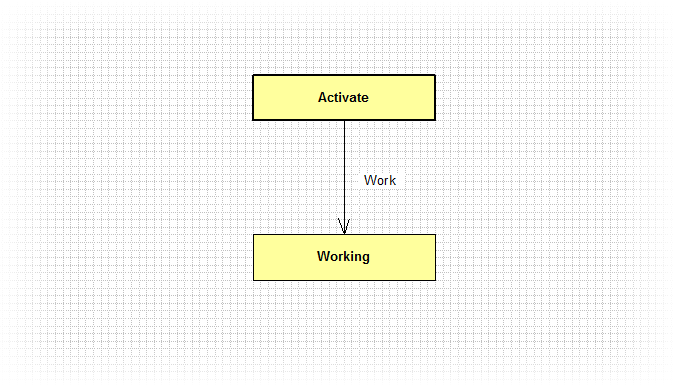 |
 |
||||||||||||
|
Home : Matrix Method : Matrix Notation : State Transition Notation |
|||||||||||||
 |
|||||||||||||
|
State Transition Diagram Notation |
|||||||||||||
|
Creation State
A creation state causes an object to come into existence.
Dynamic State
A dynamic state neither causes the creation or deletion of an object but is considered to be a normal working state of an object.
Deletion State
A deletion state causes an object to go out of existence. A state machine may only have a single deletion state.
Transition
Except for transitions caused by creation events, directed transition lines are always drawn between two states. They are named after the event that triggers the state machine's transition from the old state to the new state. A transition should not be confused with the actual event.
The event data carried by an event to a transition is normally shown on the transition line.
State Data on Transition Example
All transitions into a state must carry the same state data.
State Data Compartment
Where several transitions carrying state data enter the same state, a state data compartment box can be drawn. This declutters the diagram by removing replicated text. The contents of the state data compartment are defined by a Matrix Dataset statement. If state data compartments are used on a diagram then all states must have them where appropriate.
Bare Transition
If state data compartments are used across a diagram then only a name is required on the transition line. There is no need for a data list or empty brackets.
State Data Compartment Example
The state data compartment is drawn below the state name compartment.
Asynchronous Creation (via Event)
Asynchronous Deletion (via Event)
Synchronous Creation (via Process)
Synchronous Deletion (via Process)
Asynchronous Creation (via Event) with Asynchronous Deletion (via Event)
Synchronous Creation (via Process) with Asynchronous Deletion (via Event)
Asynchronous Creation (via Event) with Synchronous Deletion (via Process)
The kill event is never sent.
Synchronous Creation (via Process) with Synchronous Deletion (via Process)
|
|||||||||||||
|
|
|||||||||||||
| Copyright © 2017 Dark Matter Systems Ltd. All Rights Reserved. | |||||||||||||
|
|
|||||||||||||



